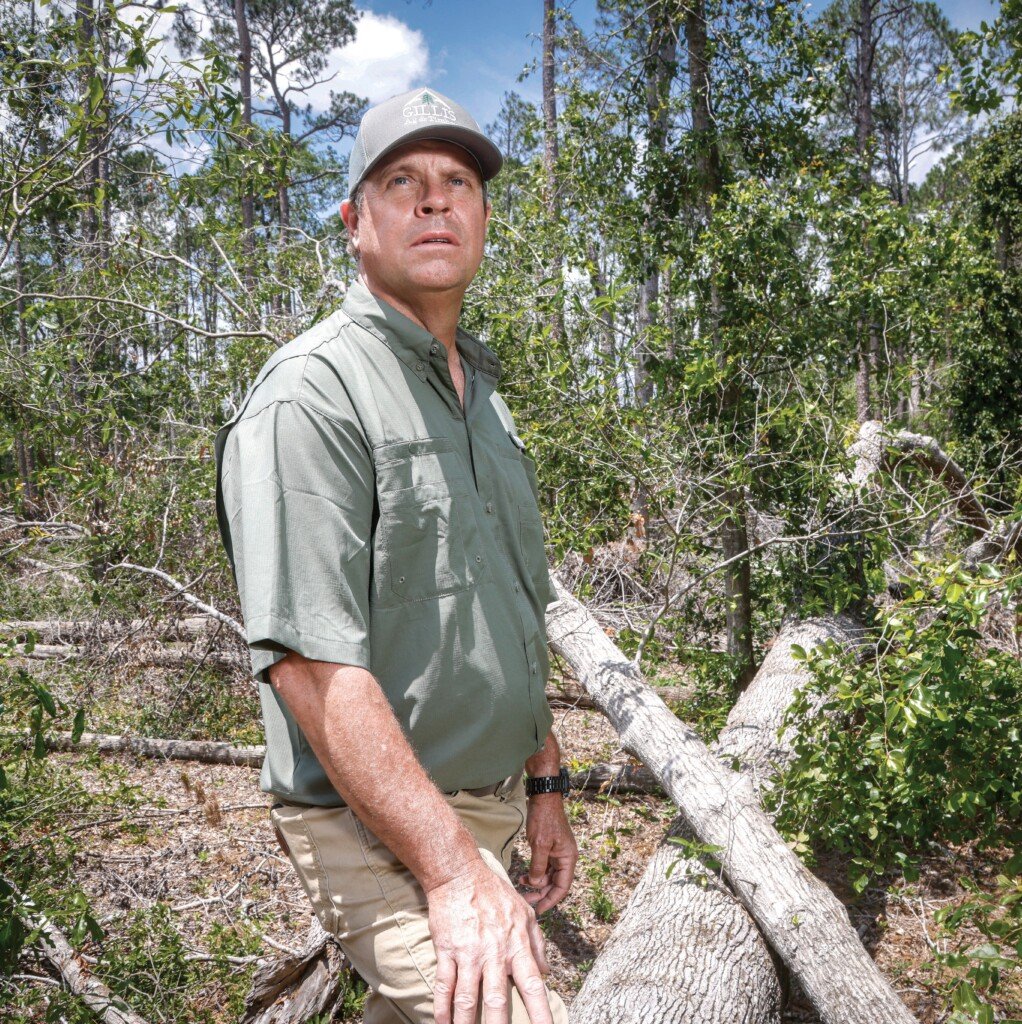Plant Vogtle’s Historic: Nuclear Revival
New reactors are the first built in the U.S. in more than three decades.
Climate scientists tell us our best chance to avoid the worst long-term effects of climate change is to bring global energy-related carbon dioxide emissions to net zero by 2050. This will require a drastic shift in energy production away from carbon-emitting sources like coal toward clean energy sources, including nuclear power.

How it Works: Nuclear energy heats fuel which produces steam, and that steam spins the turbine to generate electricity, photo contributed.
Until recently, decades had passed since construction began on a new nuclear power plant in the United States. So it was historic on July 31, 2023, when the first of two new and long-awaited nuclear reactors entered commercial service at Plant Vogtle in Burke County near Waynesboro.
Plant Vogtle’s Unit 3 produces up to 1,100 megawatts of electricity, which is enough to power half a million homes and businesses. Its twin, Unit 4, is expected to enter service during the first quarter of 2024. The reactors join Units 1 and 2, which entered service in the late 1980s and have been providing nuclear power to Georgians ever since.
A Major Energy Milestone
Federal and state energy officials consider the opening of Units 3 and 4 to be a major milestone in the nation’s transition from carbon-emitting to non-emitting energy. “Nuclear power plays a critically important role in the transition to a cleaner energy future,” says Mike Smith, the president and CEO of Oglethorpe Power, which co-owns Plant Vogtle along with Georgia Power, Municipal Electric Authority of Georgia (MEAG) and Dalton Utilities. (Georgia Power owns 45.7% of Vogtle.)
“No single energy source can keep the lights on reliably by itself,” says Smith, adding that Oglethorpe Power counts nuclear, natural gas, pumped-storage hydro, coal, solar and other renewable resources among its power-generating portfolio. “We are navigating the clean energy transition while simultaneously responding to increased electricity demand,” says Smith.
According to Georgia Power, when Unit 4 enters service, Vogtle will become the largest generator of clean energy and the most powerful nuclear power plant in the country.
Nuclear power is considered clean from an emissions standpoint because it doesn’t produce carbon dioxide; it’s not considered a renewable source of energy and it does produce hazardous waste (spent fuel rods that remain radioactive). Many experts say that nuclear power has to be part of the transition away from carbon because there’s simply no way to generate enough power without it. Even some opponents of the plant acknowledge that achieving net zero-carbon emissions is virtually impossible without nuclear being part of the power equation. The Southern Alliance for Clean Energy modeled how zero-carbon energy generation could be achieved by 2035 and determined that it’s very difficult to make the math work without nuclear power.
While solar and wind are renewable sources of zero-emission energy, they are only available when being produced naturally – or in other words, when the sun is shining or the wind is blowing. “Wind and solar are great, but you need a foundation for 24/7 power reliability,” says Jim Fuller, the CEO of MEAG and a 42-year nuclear power industry veteran.

Smart Investment: Public Service Commissioner Lauren “Bubba” McDonald, left, with then-U.S. Secretary of Energy Rick Perry, right, visiting Plant Vogtle in 2019, photo contributed.
Kim Greene, chair, president and CEO of Georgia Power, notes that nuclear power “offers high reliability, consistently low and stable fuel costs and efficient operations.”
Plant Vogtle will supply clean, reliable energy to Georgians for up to the next 80 years, “or beyond the year 2100,” says John Thomas, CEO of Dalton Utilities. “The completion of Units 3 and 4 demonstrates that nuclear power is a viable option and that our nation can produce clean energy that’s safe and reliable.”
Georgia’s energy consumption is only expected to grow in the future due to a growing economy and population, rising temperatures and increased sales of electric vehicles. “This makes the new units at Plant Vogtle critical to meeting the evolving energy needs of our state,” says Greene.
According to Smith, about one-third of the energy produced by Oglethorpe Power in 2022 was supplied by emission-free generation. When Unit 4 enters service, this will increase to nearly half.
Public Service Commissioner Lauren “Bubba” McDonald was a state legislator in the 1980s when Vogtle Units 1 and 2 entered service. “These nuclear power plants have run at more than 99% efficiency for more than three decades,” he says. “Our demands for energy have increased substantially since then, which is why I believe the new units are a smart investment for our state.” McDonald has also been a driving force in the advent of solar power in Georgia, which is now one of the top five fastest-growing states in the nation for solar energy.
Georgia is the “envy” of many other states when it comes to our investments in nuclear and solar energy, says McDonald. “When considering moving to new states, businesses look at the price and reliability of energy. The Tennessee Valley Authority is forming a roadmap toward nuclear energy and has called on us and others for assistance,” he says.

Highly Anticipated Reactors: Plant Vogtle Unit 3 (left) entered commercial service in July and Unit 4 (right) should come online early this year, photo contributed.
A Long Road to Completion
The road to completion of Units 3 and 4 has been long and winding, plagued by delays and cost overruns. According to Greene, the construction of Units 3 and 4 was approved as part of Georgia Power’s Integrated Resource Planning process back in 2006. Georgia Power’s request to begin construction on the reactors was approved by the Public Service Commission (PSC) in 2009 with a projected completion date of 2017. The estimated cost was $14 billion.
“Nuclear power plays a critically important role in the transition to a cleaner energy future.” Mike Smith, president & CEO, Oglethorpe Power
However, outside groups and the PSC warned at the time that the construction timeframe could be much longer and projected costs much higher. The first official announcement from Georgia Power of delays and increased costs came in 2013. Then in 2015, lawsuits between Georgia Power and contractors added more than $3 billion to the cost and three more years to the schedule.
But one of the biggest blows came in 2017 when project manager Westinghouse filed for bankruptcy, which eliminated some cost protections for owners and utility customers. A similar new nuclear power plant under construction in South Carolina was abandoned at this time. Georgia Power disclosed more delays and cost increases over the next couple of years as the PSC expressed doubts about the latest schedule.
Then came the pandemic, which resulted in supply chain snags and the layoffs of nearly 2,000 workers on the project. In 2021 the U.S Nuclear Regulatory Commission (NRC) announced that it would increase oversight and review of the project due to quality control problems. Another $1 billion in projected costs was added to the project and the completion date was pushed out to late 2022.
In early 2023, Georgia Power announced new delays due to a flaw that was discovered in parts of Unit 3’s safety cooling system. In March, Unit 3 finally began splitting atoms and generating electricity, reaching 100% power by May and entering service at the end of July. The price tag: more than $35 billion in capital and financing cost, or more than double the original estimate.
The first nuclear fee was added to Georgia Power bills back in 2011 so customers have been paying for the new reactors for more than a decade. By the time Unit 4 enters service, the average Georgia Power customer will have paid about $926 in their monthly bills for the reactors.

Efficient Operations: Kim Greene, chair, president and CEO of Georgia Power, at Plant Vogtle, photo contributed.
The PSC’s Public Interest Advocacy (PIA) staff and Georgia Power reached an agreement last August that would cap recovery of Unit 3 and 4 capital construction costs from customers at $7.562 billion and add about $9 per month to the average customer’s power bill. This is about $2.6 billion less than the $10.188 billion Georgia Power expects to spend on construction costs for Units 3 and 4. Any additional capital construction costs incurred after March 31, 2024, and prior to commercial operation will be the responsibility of Georgia Power, not customers.
As outlined in the Unit 3 Rate Adjustment proceeding, $2.1 billion of Unit 3 capital costs was transferred into the rate base in August 2023. This added an estimated $5.42 per month on average to residential customers’ monthly bills, according to Georgia Power. This is on top of the $9 per month noted above for capital construction costs, bringing the total average customer’s electricity bill increase up to more than $14 per month.
The decisions made to move forward with Units 3 and 4 despite delays and cost overruns were not made lightly, says Thomas, of Dalton Utilities. “We didn’t just blindly continue a project that we began. We regularly reevaluated the project at every turn. At the end of the day, Units 3 and 4 will provide a safe, economic and reliable energy resource for Georgia for generations to come,” he says.
Overcoming Major Obstacles
The Plant Vogtle expansion project has its fair share of critics due to the delays and cost overruns. Consumer advocacy group Georgia Watch is among them.
“Our concerns were always about the risk to ratepayers and the final cost,” says Georgia Watch Executive Director Liz Coyle. “We were afraid that officials were being overly optimistic from the start about what the project would cost and how long it would take to complete. Sadly, we were right.”
Coyle says she’s “not unhappy” that Unit 3 is finally operating, and Unit 4 will go live soon. “The project is important for addressing climate change,” she says. “But public interest advocacy staff has testified that the project was mismanaged from the beginning. This led to the delays and cost overruns that could have been prevented if it was properly managed.”
Proponents, however, are unwavering in their belief that the benefits of the new nuclear reactors outweigh the costs. “This is one of the biggest and most complex construction projects in the world,” says Thomas. “Several major obstacles arose that we couldn’t have anticipated when the project first started.”
Fuller notes that there are a number of “first of its kind” aspects to the reactors that increased the cost, including using a new, advanced design and being built under a new NRC licensing process.
“Building new nuclear reactors safely and precisely is a complex process,” says Greene. “We faced numerous and unprecedented challenges, including bankruptcy of our prime contractor and a global pandemic. We had to kickstart a dormant nuclear supply chain and rebuild a nuclear construction workforce.”
Greene calls the successful completion of Units 3 and 4 “the culmination of a journey that has involved tens of thousands of American craft workers and engineers, millions of labor hours and a group of committed co-owners and state leaders who had the courage and foresight to support new nuclear power when others did not. It’s a testament to the fact that when there is a common vision and shared commitment, we can accomplish monumental things.”
The Georgia Department of Economic Development agrees, saying in a statement, “… upon completion Plant Vogtle will become the largest producer of emission-free energy in the United States. This serves as just another example of how the State of Georgia invests in the future economic development of the state. Additionally, the Georgia Center of Innovation has been at the forefront of leading collaborative efforts with many business and research partners to strengthen Georgia’s energy and sustainability ecosystem. As a result, Georgia is now among the leading states in biomass exports, solar energy generation and electric mobility.”
Units 3 and 4 will provide ongoing economic benefits to Georgia, says Greene including more than 800 permanent jobs once Unit 4 begins commercial operation.
A Hyper Focus on Safety
For some people, the term “nuclear power” conjures up images of meltdowns like those that occurred at Three Mile Island in Pennsylvania in 1979, Chernobyl in Ukraine (then part of the Soviet Union) in 1986 and Fukushima, Japan, in 2011. New technology and a hyper focus on safety make accidents like these highly unlikely, though. For example, the newest reactors at Vogtle will be an evolutionary improvement over the existing reactors. It uses a gravity flow cooling system that can operate for 72 hours without human intervention and shut down passively without external power.

Clean Energy: The reactor vessel for Unit 4 will hold nuclear fuel when it begins operating this year, photo contributed.
All nuclear power plants today are designed with robust passive and active safety systems in place to protect the reactor and the public. Passive systems include physical barriers to restrict the spread of nuclear contamination, such as the concrete containment surrounding the reactor. These systems use only natural forces such as gravity, natural circulation and compressed gas to achieve their safety function.
Additional redundant systems are in place to detect and mitigate any condition that could pose a threat. In addition, inspectors from the NRC are on site full-time to make sure it is maintained and operated safely and in accordance with established nuclear operating procedures.
“Safety is the No. 1 priority when building nuclear power plants – period,” says PSC Chairman Jason Shaw. “The Plant Vogtle reactors can withstand a direct hit from a 737. And the software that runs the plant is proprietary, so it’s not connected to the internet. Plant Vogtle is protected from terrorism, fire and natural disasters.”
A Monumental Step
Greene believes that the completion of Units 3 and 4 is a critical step in propelling the future of nuclear power generation in the United States.
“It is monumental for our customers, the state of Georgia, the nation and the entire nuclear industry,” she says. “It’s important that we make these kinds of long-term investments and see them through so we can continue providing clean, safe, reliable and affordable energy to our customers.”
Nuclear power has become a critical part of the clean energy transition, says Smith. “The emission-free energy generated by Plant Vogtle significantly contributes to a cleaner energy future for Georgians. Emission-free nuclear energy provides baseload power that can advance decarbonization in a way that preserves both reliability and affordability.”






